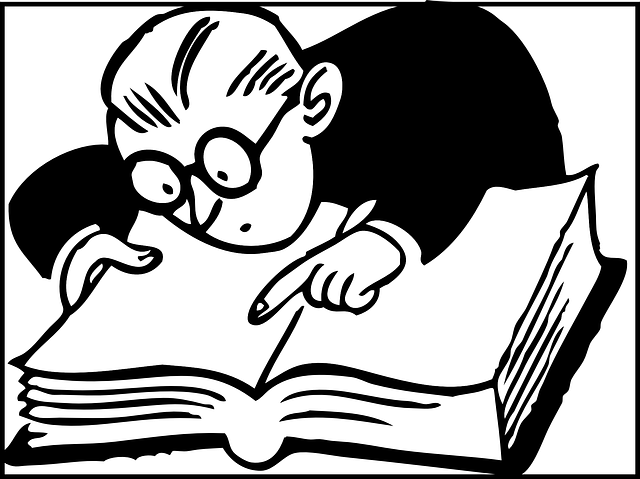Do you find yourself quoting books and wondering how to cite them correctly? If so, you’re not alone. Knowing how to cite a quote from a book properly can be tricky, but it’s an essential skill for all thriller fans to master. This blog post will provide an in-depth look at citing quotes from a book when necessary.
What is a quote, and why is it important to cite it correctly?
A quote directly references something someone else has said or written. Citing quotes correctly ensures you’re giving credit where it’s due and avoiding plagiarism. It also allows readers to easily find the original source of your referencing material.
Different types of quotations – Short, long, and paraphrased
When citing a quote from a book, it’s important to understand the different types of quotations you may be referring to.
– A short quotation is less than four lines long.
– Long quotations are more than four lines and should be set off in a separate text block or by indenting them one inch from the left margin. Omit quotation marks.
– Paraphrased quotes are when you take someone else’s words and rephrase them in your own words. While some paraphrases don’t need to be cited, it’s still a good idea to do so in order to give credit where it’s due.
How to cite a quote in text

When citing a quote from a book, you can do it in several different ways. The most common format is to use the author’s name followed by the page number in parentheses. For example: “John Green writes in his novel ‘The Fault in Our Stars’: ‘Sometimes, you read a book and it fills you with this weird evangelical zeal’ (Green, p. 74).”
How to cite a quote in the reference list
Once you’ve included the correct in-text citation for your quote, you’ll need to include it in your list of references at the end of the paper.
Depending on your style guide (MLA, APA, etc.), formatting requirements for the references will be slightly different. Generally, you’ll need to include the author’s name, title of the book, publisher, publication date, and page number.
For example:
Green, John. The Fault in Our Stars. Dutton Books for Young Readers, 2012.
When do you need to cite a quote?
When it comes to quotes, you should always err on the side of caution. Whenever you’re quoting an idea, phrase, or sentence directly from a book, it’s important to cite the source. Additionally, when summarizing or paraphrasing content from the book in your paper, you need to make sure that you are still providing proper credit to the author.
There are two main situations when you need to cite a quote
• When paraphrasing (restating an idea found in another source) or summarizing (summarizing the text’s main points). In this case, credit the original author(s) for their thoughts and ideas.
• When using direct quotations (using someone’s exact words) within your writing. Whenever quoting someone else’s words verbatim, put quotation marks around them and provide adequate citations, including page numbers if available.
To illustrate these two situations, let’s look at some examples:
– Paraphrasing Example: According to John Smith’s book “The Art of Writing,” writers should use vivid language and imagery when constructing sentences (Smith 50).
– Quotation Example: John Smith states that “the power of language lies in its ability to evoke emotion” (50).
No matter which method you use – paraphrasing or quoting – it is important that you always provide proper citations so people can locate the source material if they wish. This simple rule will display good scholarly practice and save you potential embarrassment.
Additionally, when summarizing or paraphrasing content from the book in your paper, you must ensure that you are still providing proper credit to the author.
Formats for citing quotes – APA, MLA, Chicago Style

When citing quotes from a book, you can use three main styles: APA, MLA, and Chicago Style. For each style, the formatting of the in-text citation and reference list will be slightly different. Here’s an overview of what you need to know:
APA: In-text citations should include the author’s last name and the year of publication.
Reference lists should include the author’s name, year of publication, book title, publisher, and place of publication.
MLA: In-text citations should include the author’s last name and page number.
Reference lists should include the author’s last name, first name, book title, publisher, and year of publication.
Chicago Style: In-text citations should include the author’s name and page number.
Reference lists should include the author’s last name, first name, book title, publisher, and year of publication.
By understanding the different formats for citing quotes from books, you can ensure that you’re giving proper credit to the source material and avoiding any accusations of plagiarism.
Citing quotes from books may seem complicated, but following these steps, you should be able to cite the sources you’re referencing easily. Just ensure you are always diligent about citing any material that isn’t your own so you can properly give credit where it’s due.
How to cite a quote in the reference list
Once you’ve included the correct in-text citation for your quote, you’ll need to include it in your list of references at the end of the paper. Depending on your style guide (MLA, APA, etc.), formatting requirements will differ slightly. Generally, you’ll need to include the author’s name, book title, publisher, publication date, and page number.
For example:
Green, John. The Fault in Our Stars. Dutton Books for Young Readers, 2012.
Tips for avoiding plagiarism when using quotes in your writing
When using quotes from a book in your writing, it’s essential to make sure that you avoid plagiarism. Plagiarism is using someone else’s work without citing the source properly or giving credit for their ideas. Here are a few tips for avoiding plagiarism when using quotes:
– Make sure you always cite the source directly after the quote.
– If paraphrasing someone else’s words, you must cite the source.
– Always double-check your work for any instances of accidental plagiarism.
By following these tips for avoiding plagiarism and citing quotes correctly, you can ensure that your writing is original and properly credited.
Conclusion
Citing quotes and correctly formatting them is a great way to ensure that your essays, blogs, and other written works are always accurate. Quotes add depth and interest to your sources; they are also an excellent way to support your arguments with evidence.
Whether you’re using short, long, or paraphrased quotes, the most important thing is that you cite the source. Depending on the style guide you are given, there may be many different ways you can cite a quote in various formats. But no matter which format you choose, make sure it is clear which words were taken from the source material to give proper credit where due!
With enough practice, it will become second nature and help make your writing more accurate and authoritative. Remember, when in doubt, always cite!
Thank you for taking the time to read. May you find success and joy in all that you create.
If you’re working on your first novel and are looking for more help with your writing, please check out my other articles at https://ullahakanson.com/blog/
Best of luck with your writing!
Ulla
www.ullahakanson.com

